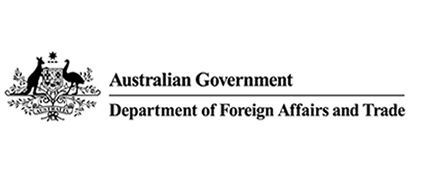The Department of Foreign Affairs and Trade (DFAT) is Australia’s lead agency managing its international presence. It not only provides foreign, trade and development policy advice, negotiates international agreements and provides consular assistance, but also delivers Australia’s aid programs.
DFAT’s purpose is to make Australia stronger, safer and more prosperous by promoting and protecting Australia’s interests internationally and contributing to global stability and economic growth, specifically in the Indo–Pacific region, a DFAT staff member told CIMA. DFAT is particularly committed to improving the lives of the most vulnerable in the Indo-Pacific region where Australia invests over 90 per cent of bilateral and regional aid.
Australia’s aid program focuses on six priority investments: infrastructure and trade, agriculture, fisheries and water; effective governance, education and health; building resilience, and gender.
In 2017-2018 DFAT will invest $3.9 billion USD in Overseas Development Assistance.

DFAT said its main thematic priorities in the Pacific region and Asia by ranking are:
In the CIMA survey, each donor was asked to rate from high to low in terms of priority the types of media interventions it supports.
DFAT’s biggest stand-alone media development project is the Pacific Media Assistance Scheme (PACMAS). PACMAS funds the development of diverse, independent and professional media that promotes informed and meaningful public discourse throughout the Pacific region and has a strong Communications for Development (C4D) approach. The program encourages broad citizenry media and communications engagement throughout the Pacific to encourage effective policy environments and a plurality of media voices.
Part of this is the PACMAS Innovation Fund (IF), which was established to provide funding support to Pacific stakeholders and development partners that play a role in media and communications in the region. Its goal is to help build both the technical and creative capacities of the Pacific media and communication sectors through four components:
“All stakeholders in the media and communication sectors that reside and work in the Pacific region at the community, national or regional level are eligible to apply. This includes all NGOs and civil society organisations that play a role in communication and awareness on development issues including better governance, MDGs, environment, gender, etc.” DFAT’s website stated.
DFAT’s media and communications aid is generally integrated within bilateral or regional aid programs, rather than standalone media projects. Its biggest stand-alone media development project is the Pacific Media Assistance Scheme (PACMAS), which will receive $1.9 million USD ($2.4 million AUD) between 2017-2019.
DFAT has partnered with the Australian Broadcasting Corporation (ABC) to deliver PACMAS through a range of modalities including workshops, peer-to-peer exchanges and mentoring arrangements.
A staff member told CIMA that it was impossible to access specific media and communication funding data from larger diverse programs, such as its support to the Papua New Guinea Governance Platform or to Transparency International, both of which have media infrastructure and development components. These include programs, such as C4D, social media or work in the telecommunications industry, which typically may be part of agreements with such multilaterals as UNICEP, the World Bank or UNDP.
$1.9 million USD
PACMAS funding (2017-2019)
Recent programs include:
Australia, along with Transparency International, is a member of the Global Anti-Corruption Consortium (GACC), an initiative that supports coalitions of investigatory journalists, civil society and governments to uncover and respond to evidence of transnational corruption. Australia’s $50,000 contribution supports innovative approaches to tacking corruption in the Indo-Pacific region.
With a $250,000 contribution, DFAT is supporting UNWOMEN to implement “Women’s Peace, Security, Rights and Voice: Safe Public Spaces, Community Outreach and Empowerment, and Political Awareness and Advocacy” in Punjab, Balochistan and Khyber Pakhtunkhwa (KP). Two major activities include:
Website: http://dfat.gov.au/pages/default.aspx
Report Author: Marguerite Sullivan
Last Updated: March 2018